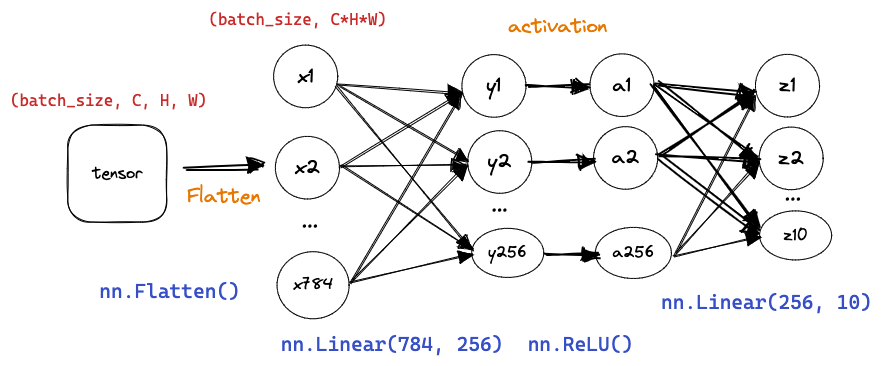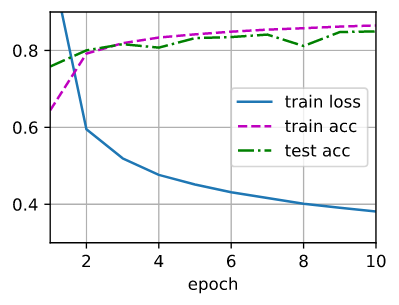© 2023 yanghn. All rights reserved. Powered by Obsidian
4.3 多层感知机的简洁实现
要点
- 用
Sequential封装各个层
1. 网络定义

net = nn.Sequential(nn.Flatten(),
nn.Linear(784, 256),
nn.ReLU(),
nn.Linear(256, 10))
def init_weights(m):
if type(m) == nn.Linear:
nn.init.normal_(m.weight, std=0.01)
net.apply(init_weights);
net.apply 见 3.7 softmax 回归简洁实现#^46d925
2. 训练
batch_size, lr, num_epochs = 256, 0.1, 10
loss = nn.CrossEntropyLoss(reduction='none')
trainer = torch.optim.SGD(net.parameters(), lr=lr)
train_iter, test_iter = d2l.load_data_fashion_mnist(batch_size)
d2l.train_ch3(net, train_iter, test_iter, loss, num_epochs, trainer)
d2l.train_ch3 参考:
